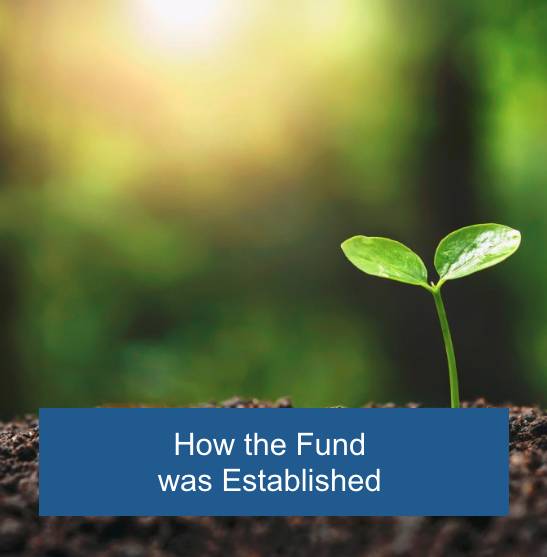Solidarity Fund
Fund Overview
The Solidarity Response Fund NPC was constituted as a “Non-Profit Company” without members under the Companies Act.
The Solidarity Fund was registered with the South African Revenue Service (SARS) as a Public Benefit Organisation as set out in section 30(3) of the Income Tax Act No 58 of 1962 (the Act).
The Solidarity Fund was granted Income Tax Exemption in terms of section 10(1)(cN) of the Act with effect from 25 March 2020.
Registration of a PBO is voluntary. The main reason why an organisation would want to register as a PBO is to attract significant donor funding and to be eligible for tax deductions.
Other reasons include:
- Certain receipts of the organisation will be tax exempt.
- Donors prefer contributing towards a Fund that is registered as a PBO, as the PBO will be able to issue a S18A certificate with which a donor can then claim a tax exemption on the funds donated.
To qualify for registration, the organisation must have in their primary objective one of the listed public benefit activities as listed in the 9th schedule of the Income Tax Act.
The Solidarity Fund’s initial key strategic objectives were based on three pillars namely: Health, Behaviour Change and Communication, and Humanitarian Relief. The strategic focus was expanded to include two more pillars, namely the Humanitarian Crisis Relief Fund (in response to the July 2021 unrest) and the Floods Relief Pillar (in response to the April 2022 Floods).
As such, the Solidarity Fund was able to register as a PBO under the public benefit activities listed by SARS as:
- Welfare and Humanitarian
- Health Care
- Disaster Relief
The Solidarity Fund was committed to transparency in the administration of the funds, and the fund administration function provided the most important record of incoming and outgoing funds. Old Mutual provided pro-bono independent and professional fund administration to the Solidarity Fund from inception until scale down. A donor management process was put in place to ensure pledges and donations were tracked and appropriately recorded.
- Donors were vetted where possible
- The Fund reported on donations received, in an appropriate manner, whilst respecting the rights of donors who wished to remain anonymous.
- S18A certificates were issued to donors who requested a certificate and who provided the required information.
- Donor funds were pooled.
- A Donor Report was circulated to donors and published on the website every month.
The Solidarity Fund’s commitment to transparency was reflected in reporting the impact of each programme on the Fund’s website.
Programmes were monitored either by staff seconded to the Fund or by implementing partners such as Tshikululu Social Investments and SPIRE. This entailed meeting with implementing agents regularly - either weekly or up to monthly intervals, to discuss progress, ensure that any issues were dealt with, and that the programme was progressing as expected.
Reports published:
- The Fund published interim impact reports at the halfway point of funding disbursement and final impact reports at the conclusion of each project to communicate the approach and outcomes of delivery.
- Internally a closure report was developed to conduct a financial reconciliation and evaluation process to ensure all contractual obligations were met and reconciled with the expenses in the Fund’s bank accounts.
- After the initial six-months of operation the Fund produced a consolidated interim report to provide a holistic picture of the Fund’s progress.
- Annually the Fund produced integrated reports, reporting on finances and impact, that were published on the website to ensure transparency.
The Fund applied the three lines of defence in its approach to controls - controls at the level of programmes, operations, and finance. More controls were introduced as the Finance function mapped risks and as the Pillars rolled out a variety of programmes. The Board, particularly the Audit and Risk Committee, played a key role in ensuring that the internal control environment was continuously improved. These controls were continuously enhanced by internal audit services provided by SkX Protiviti and a very thorough external audit process by PricewaterhouseCoopers (PwC). The operations team designed and documented the initial functions, processes and associated controls across the Fund.
The Fund had a lean operating structure with partnerships at the heart of the operating model design. The Fund leveraged relationships as far as possible to deliver on its mandate to ensure the right skills were used to execute activities effectively. For a detailed overview of the core processes and control standards see the Fund’s end-to-end Process map.
In the Fund’s first year almost every person and every organisation that became involved with the Fund committed to do the work pro bono. This was in line with Board’s commitment to the nation that all funds donated would go directly to the people of South Africa. This support was enabled through the executives and board members’ large networks within the private and philanthropic sectors that could be leveraged to onboard support. The urgency of the crisis and impact across the nation was also pivotal in galvanising South Africans to play their part in the response against COVID-19.
As the economy opened up it became apparent that this type of support was not sustainable as it led to high staff turnover. It was thus necessary for the Fund to change the operating model, securing support and services at a discounted rate instead.
ENSAfrica provided pro-bono legal, contracting and tax advisory services support to the Solidarity Fund and will continue their support on the same basis for the scaled down Fund.
The Fund’s strong governance structure and framework enabled proactive transparency and visibility to the external audience and beneficiaries.
The Fund selected a broad range of Public Benefit Activities when it registered as a PBO to avoid any restrictions in terms of activities that could be performed by the Fund.
The need to focus on strong governance sometimes meant that decisions took longer. This was mitigated by a high frequency of meetings by decision-making bodies to minimise any process delays. The Board met weekly, the Board-Committees met twice a week, and the War Room met daily at the beginning.
The pro bono service model was not sustainable over a long period and as time progressed services providers agreed to contracts at reduced rates. The nature of relief that PBO’s provide, and the duration of support, will influence what a sustainable operating and resourcing model looks like.




